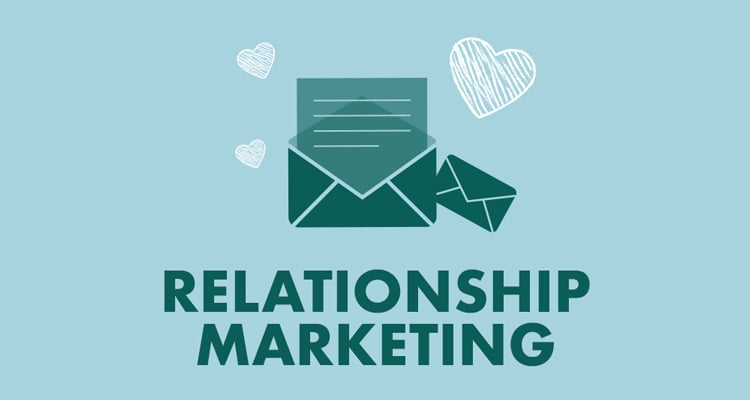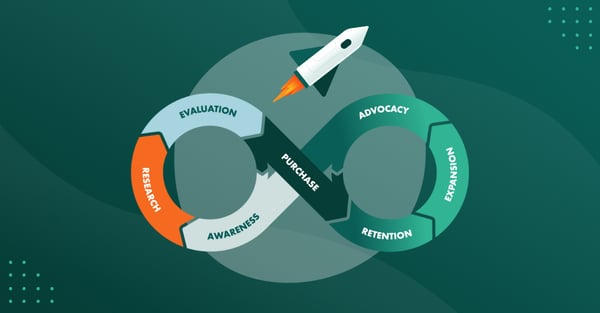You can connect with anyone on the planet.
An old friend on Facebook, a celebrity on Instagram or a former colleague on LinkedIn.
But a connection is not a relationship.
They are two different things.
While a connection is only a “click” away, a relationship requires a commitment.
It needs space and time to grow.
While having access to connect with anyone certainly has its benefits, it’s created a culture of impatience (i.e. instant gratification). We expect fast results when we connect, rather than allow a relationship to blossom.
It’s this culture that has made us forget that there are people behind these digital profiles. These people have feelings, emotions, problems, and motivations – whether you work in e-commerce, SaaS, B2B sales or in DTC (Direct-to-Consumer) brands.
It’s people that you form relationships with, not businesses.
And it’s people that respond to your marketing.
That's where Relationship Marketing comes in.
What is relationship marketing?
Relationship marketing is a long-term strategy with the focus on building close relationships with your customers.
Not only is it more cost-effective to market to existing customers (it’s 6-7 times cheaper!), but long-term customers are less likely to churn and, the longer you have a relationship with a customer, the more profitable they become.
It's worth noting that fully engaged customers tend to spend, on average, over 23% more than their actively disengaged customers. This highlights the significant impact of building strong customer relationships on revenue and business growth.
And yet, most businesses are still focused on transactional marketing, which is less about building long-term relationships and more about increasing individual sales.
Because transactional marketing puts the sale and not a relationship with the customer first, it can often lead to a poor customer experience as companies move on from one customer to the next, instead of investing more efforts into a customer’s success.
The table below illustrates the difference between the two marketing strategies.
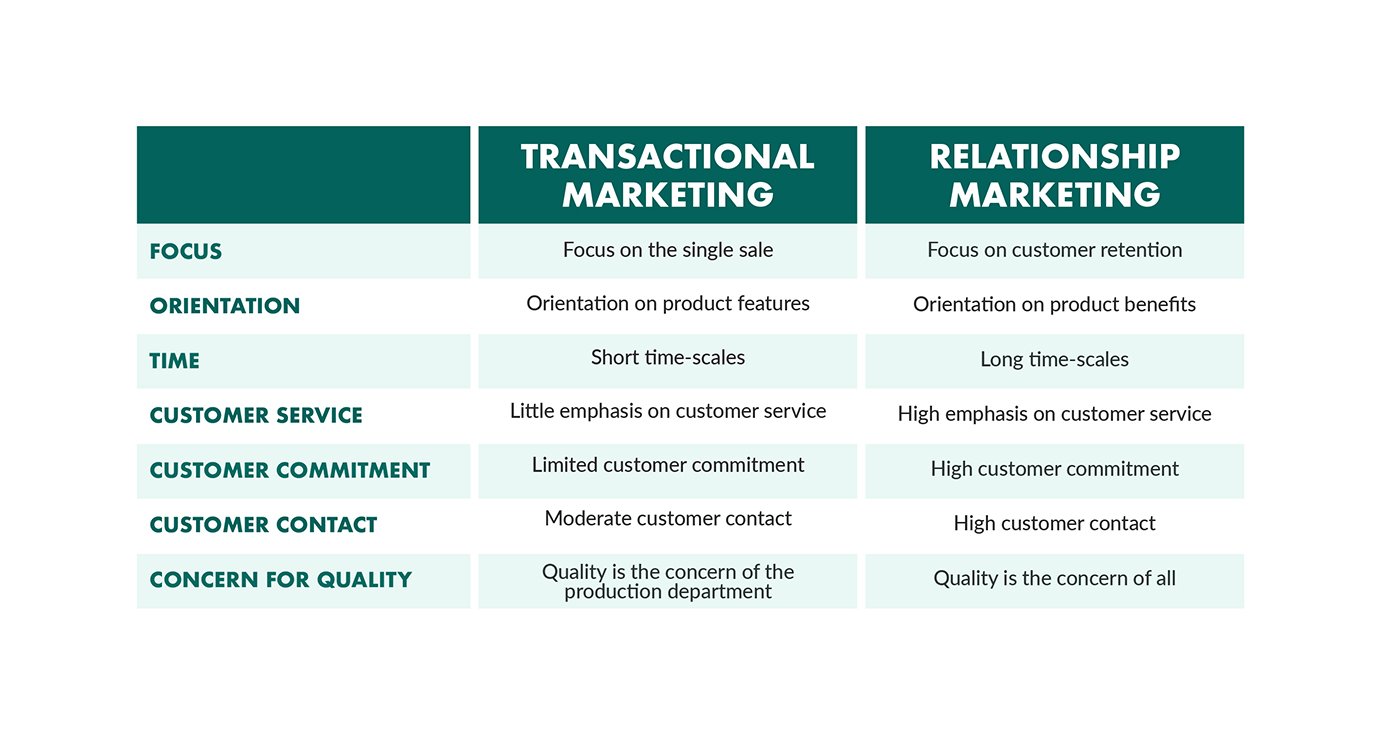
Put simply – transactional marketing is short-term thinking, while relationship marketing is long-term thinking.
Relationship marketing sounds like an obvious strategy, and yet our own research found that very few businesses are investing in their customer relationships.
An untapped growth opportunity?
How important are long-term customer relationships to your business?
Very important… right?
That’s what our own original research found too – as 85% of companies confirmed that long-term customer relationships were important to their business.
So, how many companies are investing in those relationships?
The last significant study on the topic was published in 2013 and found that only 30% of companies are fully committed to relationship marketing.
Has much changed since then?
We wanted to find out, so we conducted our own research study with 2,059 B2B marketers.
The response? Today, fewer companies are committed to it and only 24% use relationship marketing in their current marketing strategy – with 19% saying it is part of their 2023 strategy.
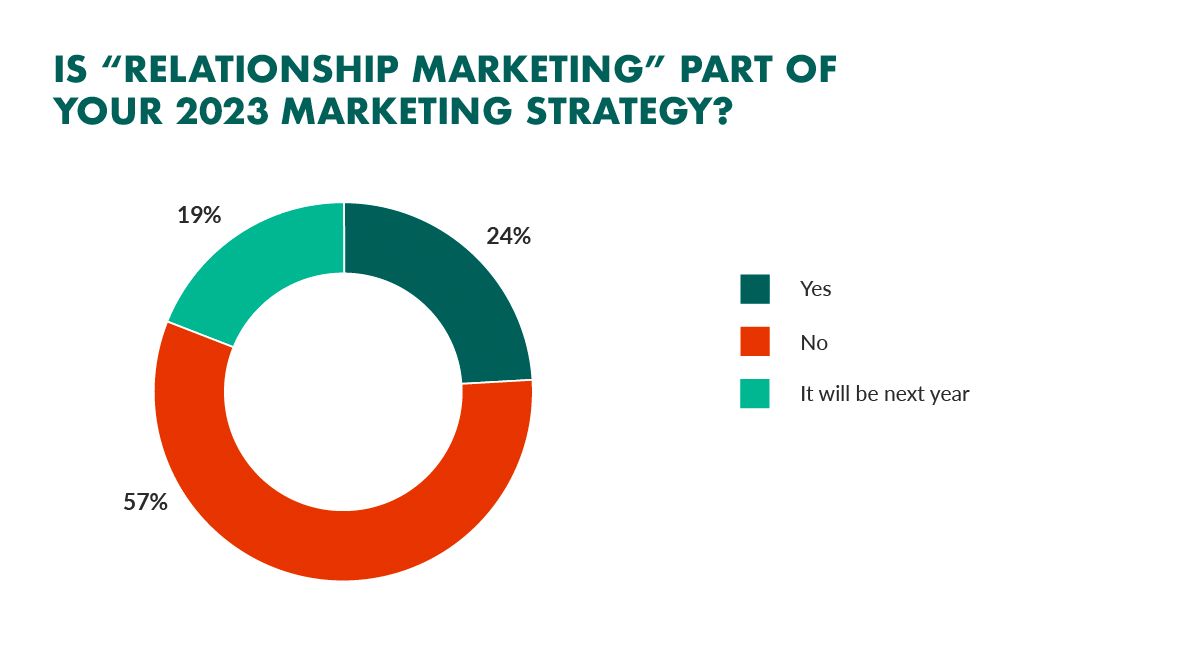
Companies that invest in relationship marketing achieve a much greater ROI compared to transactional marketing.
So, what is preventing companies from investing in relationship marketing?
The answer is simple – a lack of strategy!
How to create a relationship marketing strategy
You might argue that you are already doing some form of relationship marketing in your business – offering discounts, loyalty programs, personalized services, and upselling.
But these are tactics, and tactics are a dime a dozen.
Let’s take a step back.
To truly develop the relationship, you need to bond with your customers, create friendships and feelings that no price change, marketing campaign or discount can compete with.
Relationship marketing allows you to get inside the customer’s mind (and heart) via 3 ways: an emotional connection, a purpose-driven connection, and leveraging the brand community.
Relationship marketing allows you to get inside the customer’s mind (and heart) via 5 ways: an emotional connection, a purpose-driven connection, leveraging the brand community, implementing customer feedback mechanisms and providing exclusive offers.
Let’s take a closer look into each area.
1. Create an emotional connection with your customers
When you think about customer loyalty and evangelism, the first brands that come to mind are typically Apple, Tesla and Nike – consumer-facing companies.
These companies have created a bond so deep with their customers that if you were to talk negatively or criticize them, their customers will gladly defend it.
Now, you might say: “But this kind of relationship doesn’t exist in B2B though!”
Wrong. Of course, it does!
Yes, the “B2B” in B2B sales stands for business-to-business, but it’s still a person (not a business) who visits your website, downloads a white paper and requests a demo.
These people have feelings, too. And it’s these feelings you need to tap into in order to create an emotional connection. Why?
Because the more emotionally connected a customer is to your brand, the more they will spend with you.
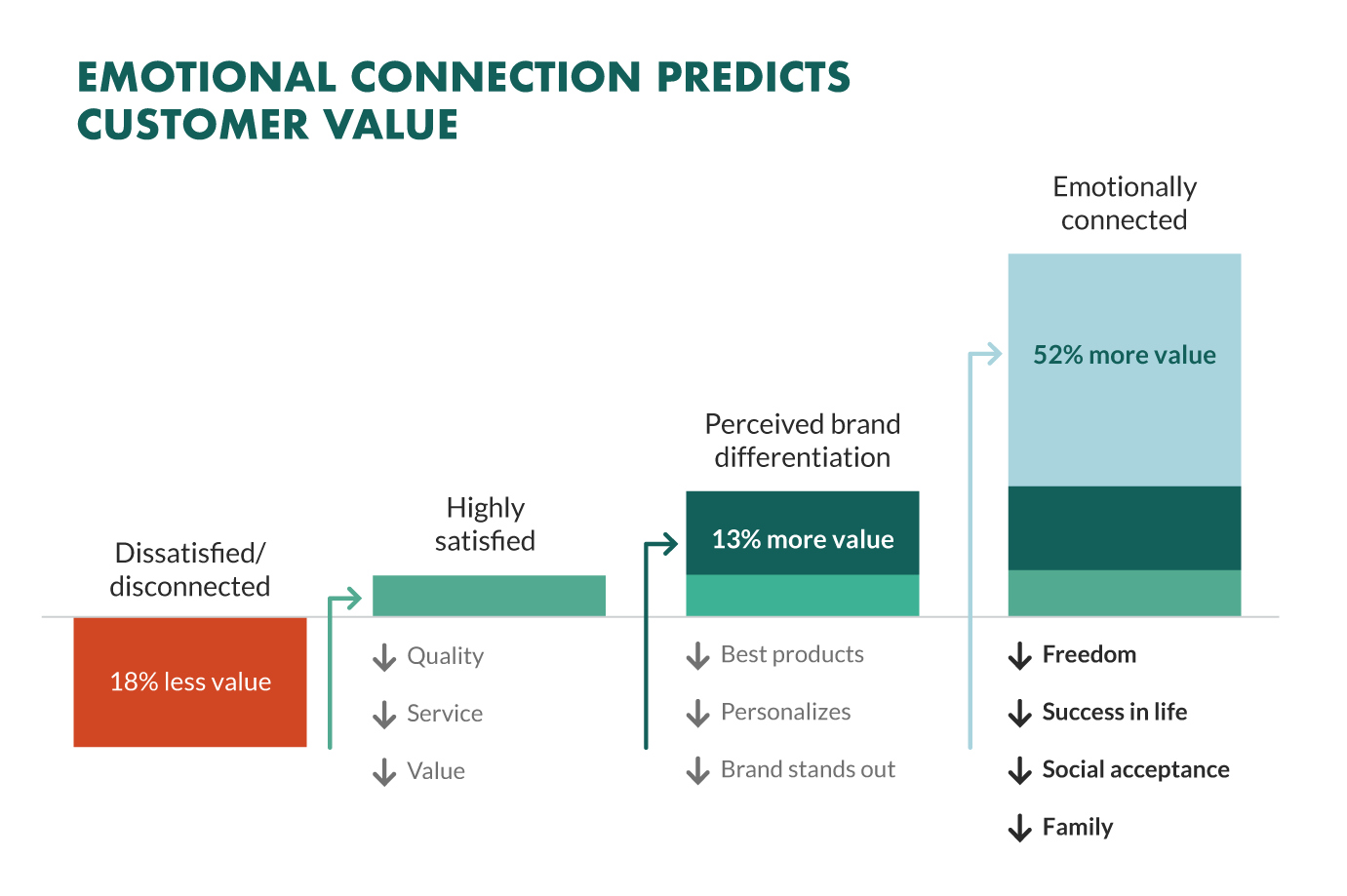
So, how do you create a more emotional connection in your marketing campaigns?
You need to build trust, show personality, inspire confidence and deliver a great customer experience.
Build trust. Trust is an important part of every relationship, so make sure you deliver on your promise at every stage of the customer journey. Have you won awards for your product? Do your customers give 5-star reviews of your product? If so, display them on your website. Don’t just tell customers you are trustworthy, show them you are!
Show personality. It’s time to knock the barrier between you and your customers down and let them in to see who you, the people behind your company, are. You can do that by posting photos of your employees on social media or share stories of how you’re supporting the local community in your email marketing. Bring your audience along and invite them to share their stories or photos. Including them in the conversation is a great way to build a deeper connection.
Inspire confidence. If two people sign up to your free trial offering, are they getting the same brand experience? They should. How about the communication strategy – does that differ depending on where a customer is based? It shouldn’t. Whether it’s in your advertising campaigns, sales presentations or on the website – maintaining a consistent brand throughout your company inspires confidence with customers.
Deliver a great customer experience. A great customer experience is no longer enough. Today, you need to deliver an amazing, memorable and an emotional customer experience. But how can marketing teams support the customer experience?
Here are a few simple marketing ideas:
- Only send relevant content to your audience – use a CRM to avoid “one size fits all” marketing campaigns.
- Create personalized videos to customers when they celebrate a new milestone – a product launch day, 1-year anniversary, etc.
- Speak with your customers. Ask them for feedback and suggestions and let them know when you use their input in your marketing material. Let them be “co-creators” of your messaging.
2. Establish a meaningful reason for being in business
Providing value, whether in the form of content, software features or customer service, will always help strengthen the relationship you have with your customers.
But there’s a new way to tap into the hearts of your customers and that’s by having a purpose. A purpose beyond revenue, profits and dividend sharing.
As Simon Sinek put it in one of his famous Ted Talks:
“Profit isn’t a purpose. It’s a result. To have purpose means the things we do are of real value to others.”
In fact, it’s become so important that a study by Clutch found that customers prioritize purpose-driven attributes as more important than price or value, when choosing whom to do business with.
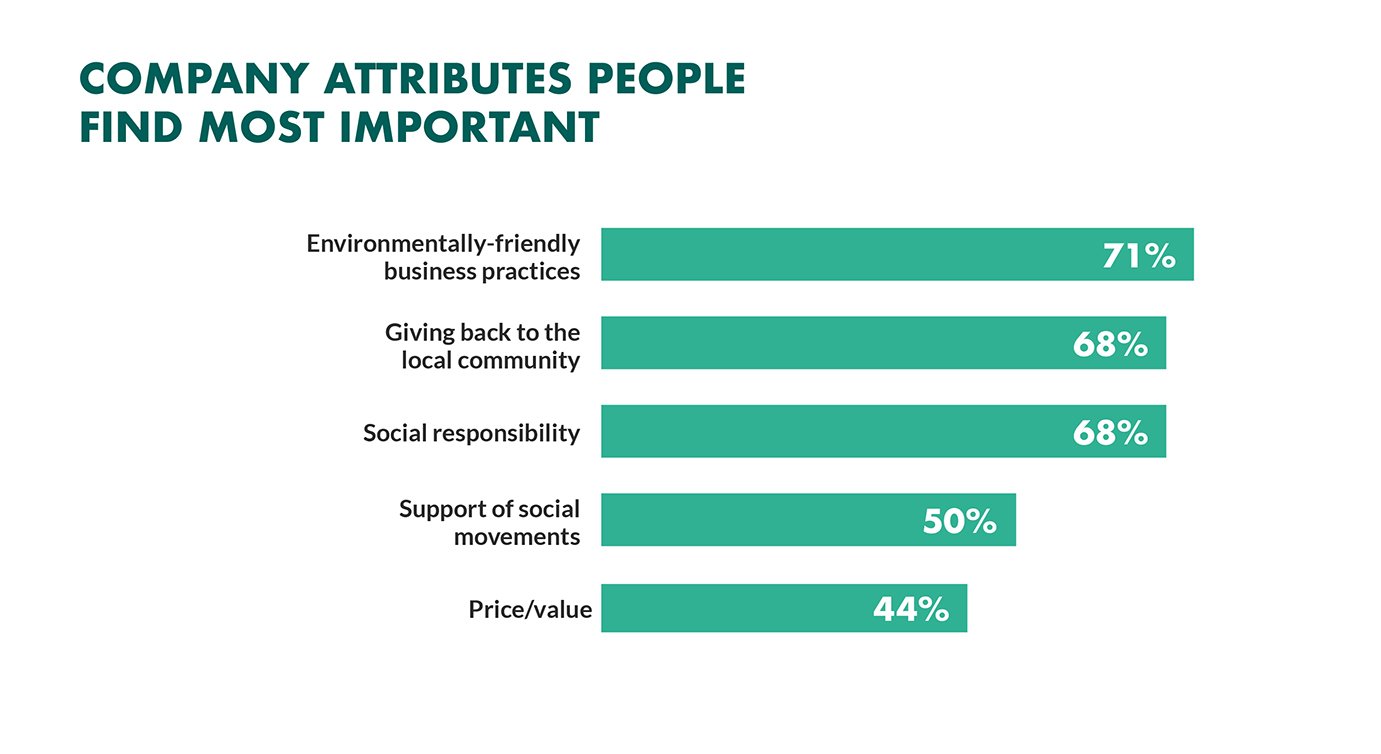
Today’s consumers want to do business with companies that stand for something – whether it’s volunteering, supporting equality and fighting injustice or tackling environmental issues.
Research backs this up, too.
Customers are more willing to part ways with their budgets when companies have a purpose, such as:
- 47% of customers buy from brands that support a good cause on a monthly basis,
- 53% of customers would NOT invest in a company that does not actively support a good cause,
- 91% of customers would switch brands if a different brand of similar price and quality supported a good cause.
In other words, being purpose-driven is a growth driver for your business.
What is your purpose?
I can’t help you choose a purpose, but hopefully I can help you start thinking about it. Here’s three questions to consider:
- Are you ready to invest? Being purpose-driven requires an investment. You need to allocate a budget towards your purpose. The bigger the purpose, the bigger the budget.
- How can you get your entire company onboard? Being purpose-driven is not the sole responsibility of the CEO or the management board. It’s a company-wide initiative.
- Does the purpose align with your brand? How are you perceived today by your customers? How do you want your brand to be perceived in the future? Being purpose-driven highly impacts brand perception.
3. Leverage your community
When you have deep connections with your customers, and your brand is purpose-driven, communities will naturally form. A brand community, at its core, is a vital group of customers who support and promote your brand whenever they can.
But these relationships need nurturing, too.
Here’s how:
- Bring your community together. Your community will be spread out across multiple platforms – whether on your website, in forums or on social media. Consider bringing them together, whether in-person at an event or online as a way to connect, share and discuss new marketing ideas.
- Listen to your community. Your customers will read your content, use your product and engage with your social accounts more so than prospects. When they do provide feedback on campaigns and marketing material, you need to act on it and acknowledge your customers when you do.
- Let your community promote you. Your community is passionate about your brand, they want to spread the word and bring their friends, family and colleagues onboard. Help them spread the word by creating marketing campaigns and stories that appeal to their hearts, not just their mind.
- Make the community about them. It’s not always about you. Shine a light on their work and promote your biggest supporters with the rest of the community. You can invite them to speak at an event, feature them on your blog or create a video series that highlights their work and achievements.
4. Implement customer feedback mechanisms
Another efficient way you can build strong relationships with your customers is by understanding their needs and preferences.
Here’s how you get it done:
Set up robust customer feedback mechanisms: Encourage your customers to give honest feedback through reviews, feedback or direct communication channels.
Use this opportunity to actively listen to what they have to say, and use the insights to improve your products, services and overall customer experience.
Make sure it's clear that you acknowledge their feedback and value their input by making visible changes that directly align with their feedback.
Not only does this demonstrate a commitment to customer satisfaction, but it also creates a sense of partnership and belonging.
5. Provide exclusive benefits for your brand community
Our last tip that can help strengthen the bond with your customers and brand community is to offer exclusive benefits or rewards.
Here’s some ideas:
-
Early access to new products
-
Special discounts
-
Unique experiences that are only available to your most loyal customers
Here’s why this works: By creating a sense of exclusivity, you encourage customers to remain engaged with your brand and feel like part of an elite group.
Not only does this foster stronger customer relationships, but it also motivates existing community members to promote your brand to others - which can result in even more loyal and satisfied customers.
Finally, you should consistently communicate with your customers and brand community to keep them informed about these special offers and maintain their sense of partnership and belonging.
Conclusion
Successful companies understand that the key to growth lies with long-term customers.
Technology has transformed the way we do business, but it’s our responsibility to build, nurture and grow customer relationships over time.
To achieve this, we have to start thinking more about the way you make your customers feel. As it’s their feelings that creates a strong bond with you.
With the relationship marketing strategies outlined above, you will appeal to their emotions, you will stand for a good cause (and not just profitability) and, you will leverage the power of community to create an army of loyal supporters.
Now, more than ever before, it’s time to focus more on the R in CRM – the Relationship.
Because relationships matter.
Book a demo today and start learning how SuperOffice CRM can help you build better customer relationships.
Customer also ask
How can small businesses with limited resources effectively implement relationship marketing strategies without the extensive budgets that larger companies might have at their disposal?
Small businesses, despite their limited resources, can effectively implement relationship marketing strategies by leveraging their agility and capacity for personal connection. They can focus on building strong, personalized relationships through direct engagement with customers via social media, personalized email communication, and community involvement.
These efforts don't require extensive budgets but rather a deep understanding of the customer base and a genuine desire to meet their needs and preferences.
In industries where transactional relationships are the norm, such as commodity goods or highly competitive markets, how can companies shift their approach to more relationship-focused marketing without alienating their existing customer base?
Shifting from transactional to relationship-focused marketing in industries dominated by one-off transactions involves a strategic pivot towards long-term customer engagement. Companies can start by enhancing their customer service, offering loyalty programs, and creating value-added content that educates or entertains their audience beyond the point of sale.
This approach doesn't necessarily alienate an existing customer base; instead, it can deepen customer loyalty and encourage repeat business by demonstrating ongoing value. It's about improving the customer experience with meaningful interactions that go beyond the mere exchange of goods or services.
What metrics or key performance indicators (KPIs) should companies focus on to measure the success of their relationship marketing efforts over time, especially when the benefits might not be as immediately tangible as those from transactional marketing?
When it comes to measuring the success of relationship marketing efforts, traditional transactional metrics like sales volume and immediate ROI may not fully capture the long-term value generated. Instead, companies should focus on metrics that reflect customer loyalty and engagement, such as customer lifetime value (CLV), Net Promoter Score (NPS), and retention rates.
These indicators can provide insights into the health of customer relationships and the effectiveness of relationship marketing strategies over time. Monitoring customer feedback and social media engagement can also offer qualitative insights into the strength of customer relationships, complementing the quantitative data.
Together, these metrics can guide companies in refining their relationship marketing efforts to foster stronger, more enduring connections with their customers.
